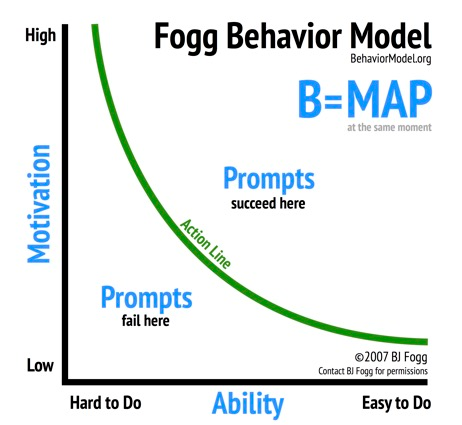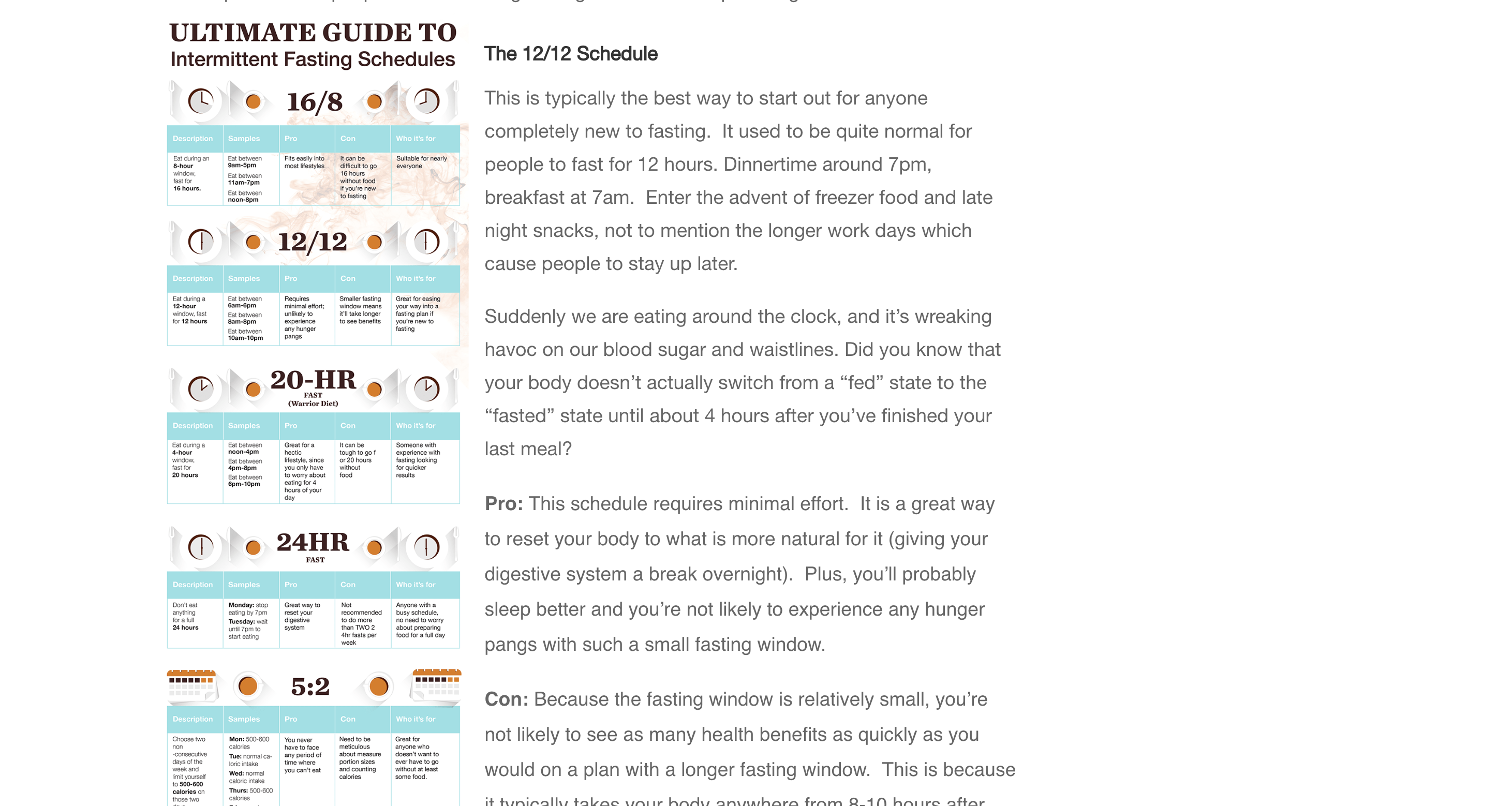Two simple behavioral levers to improve your link building efforts
There are only two broad strategies to improve your link building effectiveness, both of which come from a framework using BJ Fogg’s behavior model.
There are only two broad strategies to improve your link building effectiveness, both of which come from a framework using BJ Fogg’s behavior model.
Link building is hard. Anyone who says otherwise has either not done much of it, or they’re trying to sell you a course.
To make it even harder, there are a million supposed link building hacks and tactics on the web – and most of them are pretty bad. A quick Google search will net you a treasure trove of stale email templates and tactics like link reclamation that either trick you into believing them because they rank well in search, or make you wonder why articles like that don’t have an expiration date.
When it comes down to brass tacks, there are really only two broad strategies for increasing your link building effectiveness, both of which come from a framework using BJ Fogg’s behavior model:
Link building is a critical part of SEO, whether your website is small or large.
Here’s how you can use BJ Fogg’s framework to really improve your link building strategies – despite what your Google searches are telling you.
BJ Fogg’s behavior model illustrates that three elements must converge at the exact same moment for a behavior to occur: “Motivation”, “Ability”, and a “Prompt”. When the desired behavior is not performed, one or more of these elements is missing.

Source: Behaviormodel.org
Each of these elements is comprised of subcomponents. For example, “Core Motivators” will shape the “Motivation” element, “Simplicity Factors” define the “Ability” element, and each of these will work together in the context of the “Prompt”.
“Motivation” and “Ability” share a compensatory relationship in that when one is high, the other can be low and still achieve the desired results. For example, if something is hard to do, success can still be achieved if the motivation is high enough.
When this model is applied to link building, your best chance at securing a quality link is to either increase someone’s motivation to link to you or decrease friction to make it easier to link to you.
Let’s dive in.
If you’re trying to increase motivation, you need to figure out how to influence how much the blogger or publisher wants to give you a link. The main way to do that is to produce really amazing content. That’s really a pre-requisite, for any long term content program, you can’t cut corners on content quality.
Outside of that, though, there are several ways to increase the blogger’s motivation to give you a link to that amazing content:
Creating strong relationships is a clear path to increasing motivation. Your strategic partners can be an “in” to new markets or audiences, and ideally, you’ll be able to offer the same benefit to them.
As marketing strategist Mark Lindquist of Mailshake notes, when forming strategic partnerships, it’s not just about building high-profile relationships – it’s about working with the right people.
“I’m not at all concerned about the social following of someone as an indication of whether or not they’re worth connecting with,” he says. “Figure out what your goals are, find the people who can help you accomplish those goals, and build relationships with them.”
Guest posting is a great way to start building these relationships, but it’s also important to go to meetups, get on calls, and generally build your network and help others out. A good rule is to offer something of value first before asking for something in return. It’s a long game, but it will ultimately result in a win-win for everyone involved.
‘What’s in it for me?”
This is the ultimate question at the center of almost any transaction or conversation in marketing and business, and for good reason. Mercy and gratitude won’t get the job done. You need to push the self-interest button to spur action.
If someone is devoting time and resources to help you, they’ll want to know that it’s worth their efforts. What incentives can you offer?
If you have a large social following, use it as leverage in the deal. They can tap into your audience and essentially get free exposure if they’re willing to do the same for you.
If your content genuinely helps someone improve their own content, it’s a much easier sell than a stale pitch of “My content is slightly better than what you already link to”. Here’s what better content could look like:
New original research
At Hubspot, we did some original research with the goal of getting some links back to our forms product. We published a blog post with the findings, and it was pretty easy to pick up some links because the data was new and interesting to bloggers.

Source: ahrefs
Exclusive quotes and interviews
Working with influencers is a strategy that works for tons of companies like DataBox, BigCommerce, and Mailshake.
For example, Smart Blogger uses round-up pieces to boost social shares and connect with influencers. They reached out to bloggers asking for their best tips on how to promote a blog, and the final article became one of their most successful posts at that time with more than 4,000 shares.
New images and graphs
Infographics and images can become outdated just as easily as blog text. As new research and information become available, images and infographics should be adjusted to reflect it.
I think the infographic link building tactic is sometimes overdone, but it can still work if you do it right. It’s best when you’re summarizing new data or complex information in a simple and interesting way. A great example is Pique Tea’s guide to intermittent fasting (a complex subject):

Source: blog.piquetea.com
SEO Smarty’s case study shows how they shared an infographic at scale using MyBlogGuest to get it in front of potential publishers (they earned 10 links from this method, by the way).
Or, you could do this the old-fashioned way by posting your infographic to your own blog, sharing seed content on social media, and reaching out to potential publications that could use it.
Anything that genuinely improves their content, ask yourself – “How can I improve tons of people’s content by creating something new?”
What questions do you have while reading content that goes unanswered? Could something you’ve written help to clarify?
LawnStarter does this well with their original research and data analysis pieces. For example, their blog post on the beneficial insects for your lawn includes backlinks to reputable sources for more information without distracting from the overall content.
The other link building method is to lower the friction or the inherent effort it takes someone to give you a link. Your goal should be to make things as easy as possible for the person on the other side.
Good email outreach means that the person on the other end of your email shouldn’t have to figure out what you’re trying to say. If they don’t understand your request, they probably won’t respond to it.
Keep it simple and professional, but don’t be afraid to infuse a little personality, either:

There’s no need for mystery or ulterior motives. Ask for what you want, and tell them why you’re asking for it.
Give publishers as little work to do as possible. This not only makes it easy for them to do what you want, but it also ensures the quality of the final results. Your link or quote looks just as you want it to, the anchor text is spot-on, and you can reach back out with a genuine “Thank you”.
Other sources you can tap into are HARO or even Slack groups where people are actively looking for quotes. This is a super low-friction way to get links – for you and the publisher – because the barrier to entry is low.
Guest posting remains one of the most effective, low-friction ways to earn backlinks. If your post is good, the publisher has zero work to do other than hit “Publish”.
If you can write a good guest post, you’re giving someone content for free, which is a win-win. Many publishers have a dedicated contributor program, but even if you don’t see one on their website, they still may accept guest posts with a good pitch.
Also, don’t forget to reduce friction in your own process. Use a cold email tool like Mailshake and a good CRM like HubSpot to automate and track all of your efforts, and remove much of the guesswork on outreach and follow-up.
BJ Fogg’s behavior model has been applied to a myriad of practical use cases, but its potency for effective link building is hard to ignore. Increasing someone else’s motivation and decreasing friction might not help you earn every link you pursue, but it can help you win bigger and lose smaller the more you do it.
Alex Birkett is a Senior Growth Marketing Manager at HubSpot, where he focuses on freemium user growth. He can be found on Twitter @iamalexbirkett.